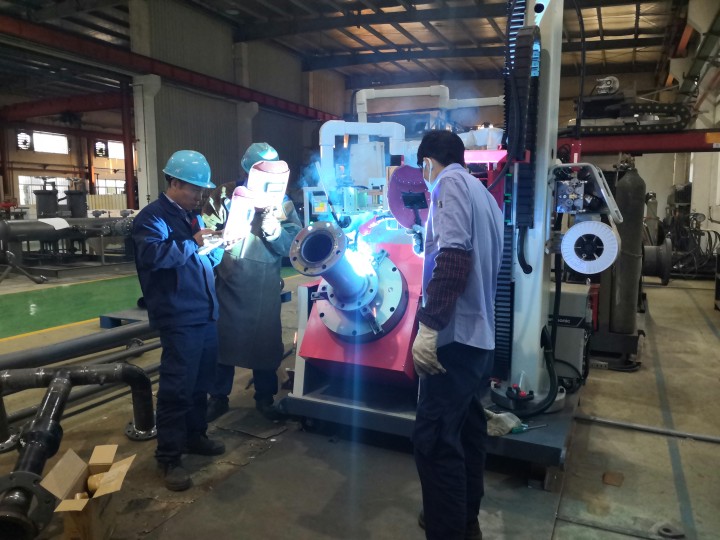Dec. 03, 2021
1)Arc stability and arc initiation, about arc initiation, gas with low ionization potential is easy to ionize, arc generation and arc maintenance is easy.Compared with He base gas, Ar base gas is easier to initiate arc, and if CO2 and 02 are added, the arc initiation is better.
However, when CO2 is added to a higher proportion, the droplet transition shape after arc initiation may determine the arc initiation.
Secondly, the stability of arc is basically determined by the stability of arc cathode spots, although the influence of ionization potential mentioned above should be considered.
When the gas is oxidized, the formation of stable oxides on the molten pool surface becomes the condition of arc stability. Therefore, adding 02 to protective gas can improve arc stability.

2)Weld forming and splashes
The selection of protective gas is very important for weld forming. Using pure Ar not only has finger-like weld depth, which is easy to produce cracks, but also has poor fluidity, which is not conducive to the formation of weld surface bending.
Ar+CO2 mixture gas makes the weld have smaller weld forming coefficient, good surface forming, small splash, these characteristics are very suitable for narrow gap welding, and the addition of O2 will increase the splash, so the general steel material melting very narrow gap welding protection gas is Ar+CO2.
3) stomatal problems
MAG welding, shielding gas shielding atmosphere and protecting high temperature metal, poor protection will cause pores and pits. The results of the porosity resistance of various gases are shown in Figure 5.3-16.In the Ar+CO2 mixture, obvious porosity can be seen at 2% CO2 (volume fraction), and porosity can be significantly reduced at 10% CO2 (volume fraction).The proportion of stomata decreases slowly when CO2 is added. When pure CO2 is used, stomata can be considered almost non-existent.
4)Mechanical properties of weld metal
The mechanical properties of general iron weld metals depend on the influence of carbon content and 0, N and other components. The toughness of metal is the most prominent influence on mechanical properties of various protective gases.